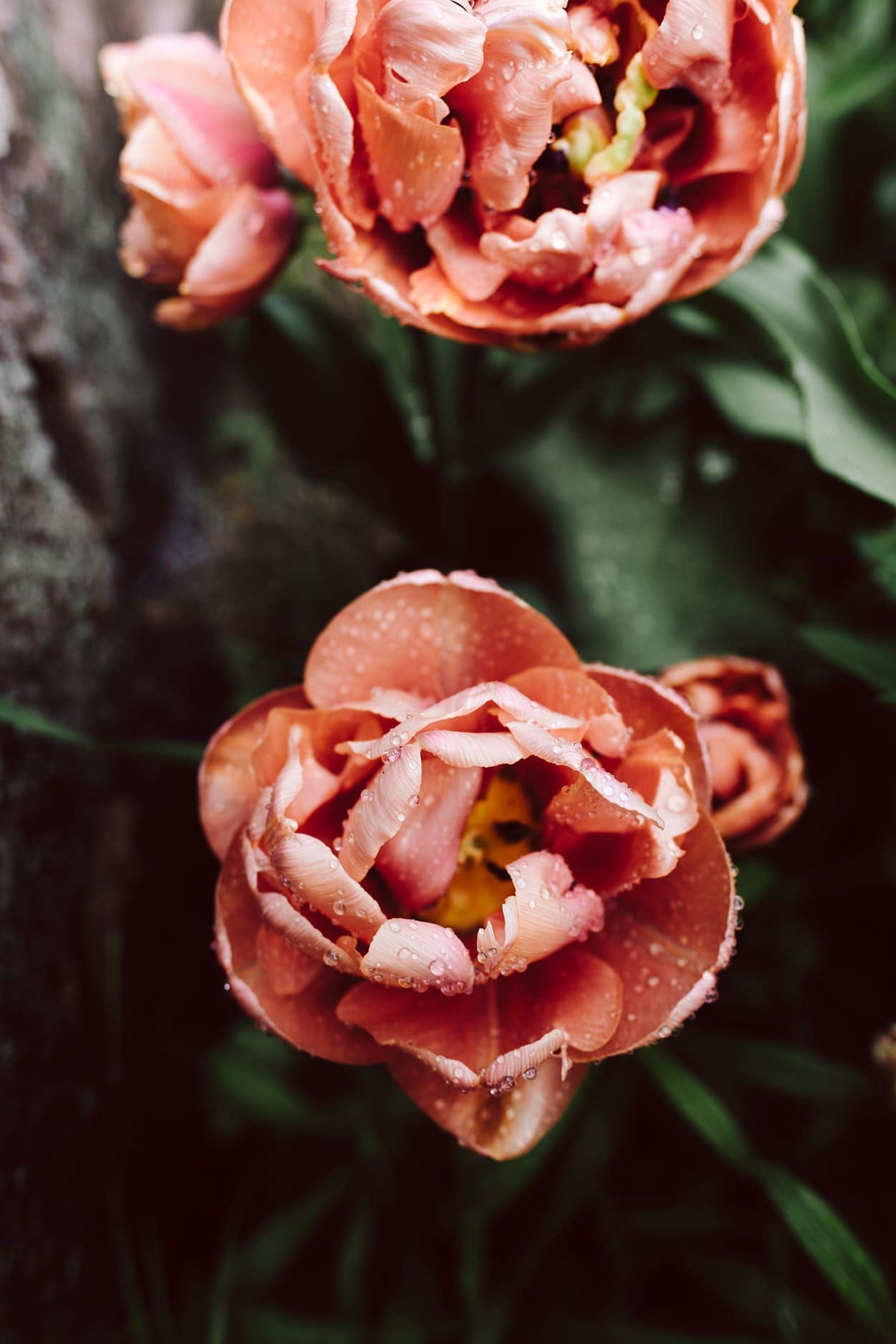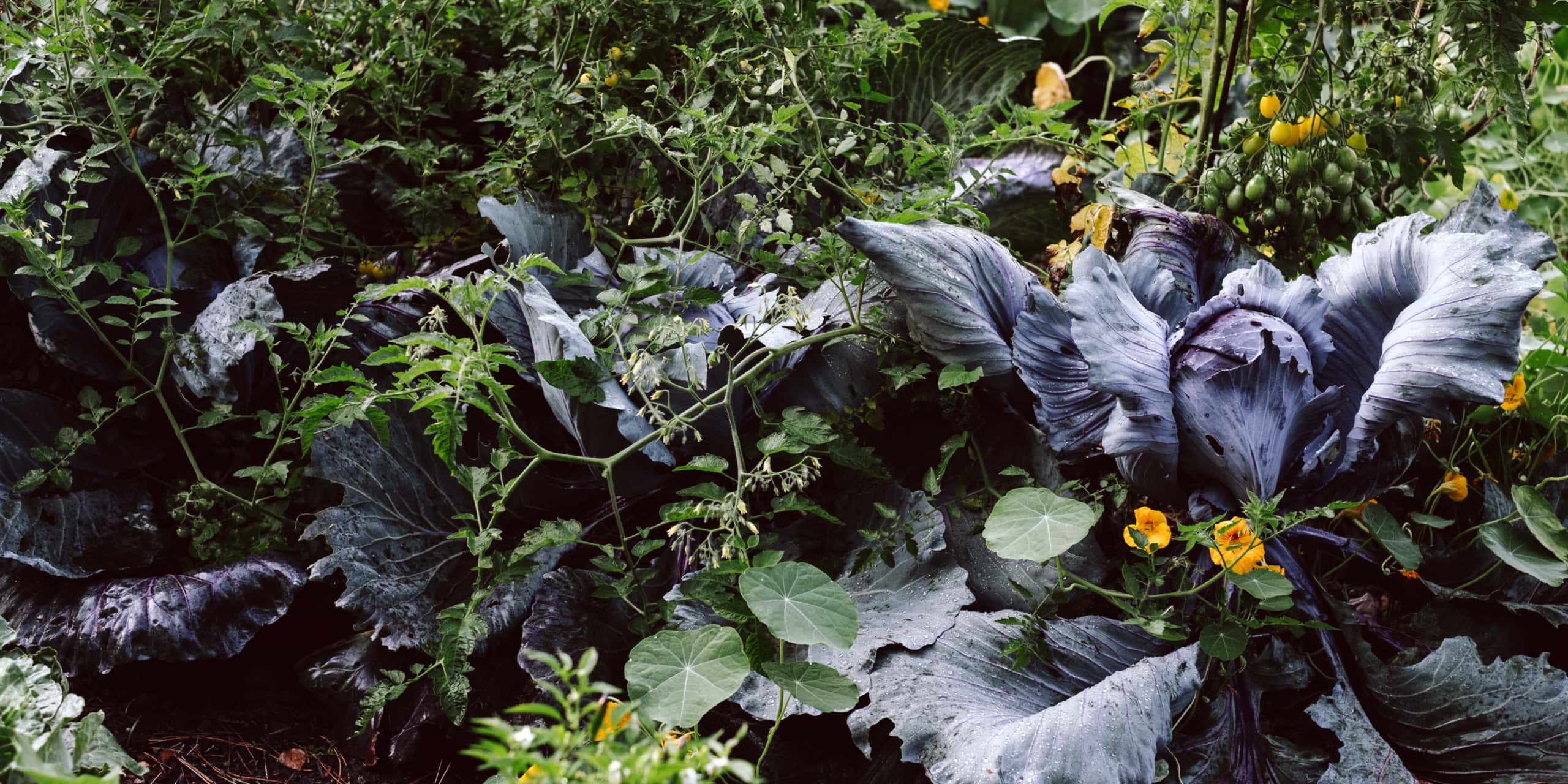
For example, deep-rooted plants are combined with shallow-rooted plants or high-growing plants with soil-covering ones. This interaction promotes plant growth and, in the best case, even fends off pests and plant diseases or counteracts them preventively. Such a balance makes it possible to intervene little and can save a lot of work and annoyance. All ecological cycles that nature has perfected over many millennia are based on this principle. Take a forest or a meadow. The individual species growing there have adapted to each other over time to form a community in which everyone gets the amount of light, water, space and nutrients they need. The goal in our bed planning is to take advantage of just such good neighborhoods between the cultivated plants and avoid bad ones. Fortunately, we can draw on knowledge and experience based on decades, sometimes even centuries, of observation to achieve this. Step by step we would like to be able to better understand and comprehend these relationships.
But first of all it helped us a lot to get an overview of the different plant families. Plants of the same family are usually not good partners. They do not have a positive effect on each other, because their nutrient requirements are similar, they attract the same pests or are vulnerable to the same diseases. So whether you grow a whole row of cucumbers, or alternate them with pumpkins and courgettes would have no effect on plant health, as all three belong to the same plant family. We would like to introduce you to a few mixed cultures that we have already planted successfully.
In our last post we already gave you an insight into how we organize ourselves so that we don’t lose track of seeds, varieties and cultivation. The next step is to get the vegetables into the bed in such a way that we can harvest a varied and abundant crop over as long a period as possible. But before we share our bedding plans for the new season with you, we would first like to write about an exciting topic on which all our planting plans are based.
Even though our garden structure is very geometric and orderly, we basically like it wild. With different plants, which bring different colours, heights and structures into the garden, we break up the straightness again and give the kitchen garden, even if it is artificially arranged, the necessary naturalness. We find combining plants with each other to be wonderful from a purely visual point of view. For us, however, it has another, much more important meaning.
In order to leach the soil as little as possible and prevent diseases, we grow our vegetables in mixed crops. The plants are combined in such a way that they can benefit from each other. This allows one plant to absorb nutrients from the soil that the neighbouring plant does not need or only needs in small quantities. However, plants themselves also release various substances from their metabolism that can be useful for the soil and their neighbours. This creates an interplay of giving and taking. It can take place underground through root excretion, or above ground through scents such as essential oils. Other plant properties also favour certain combinations.
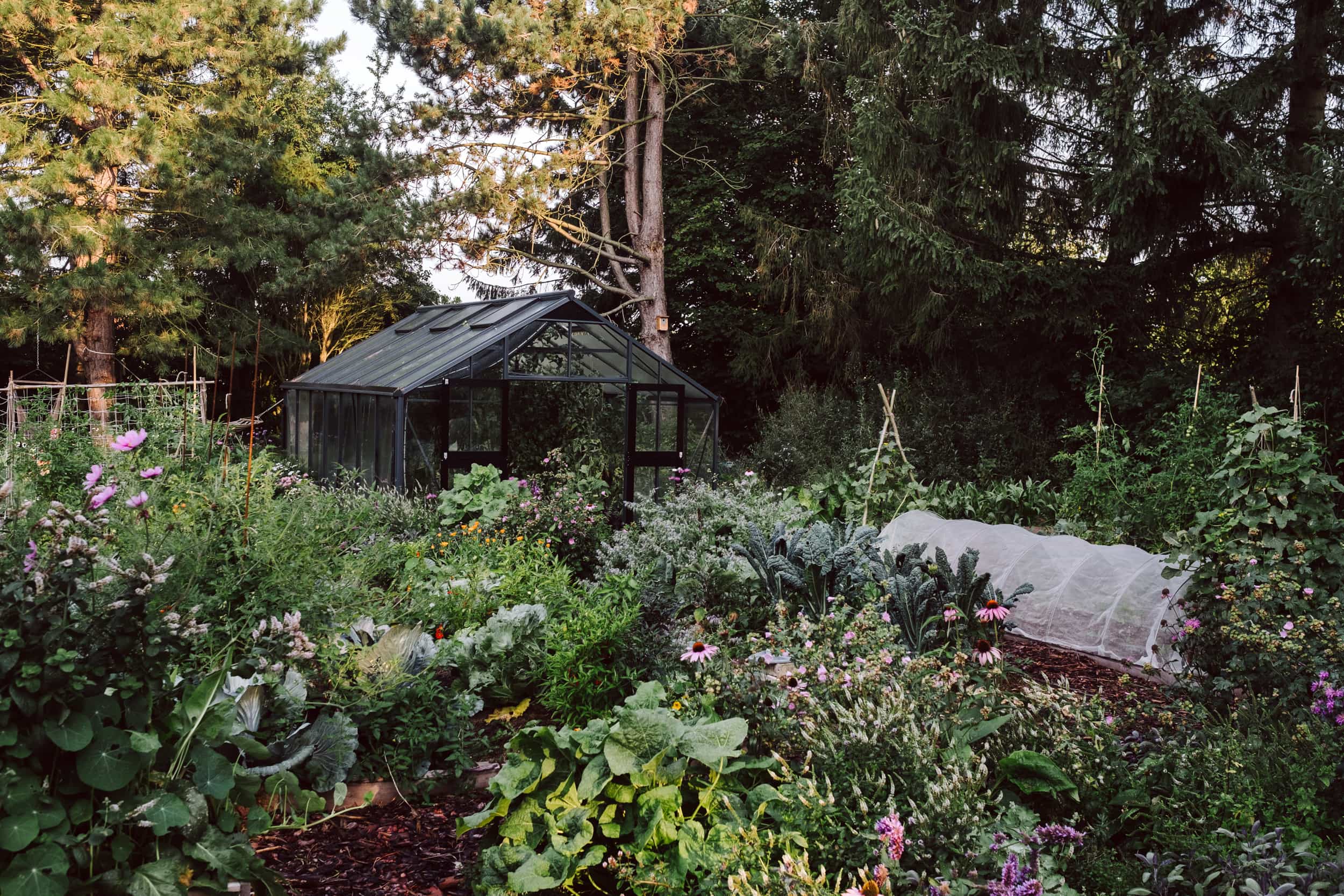
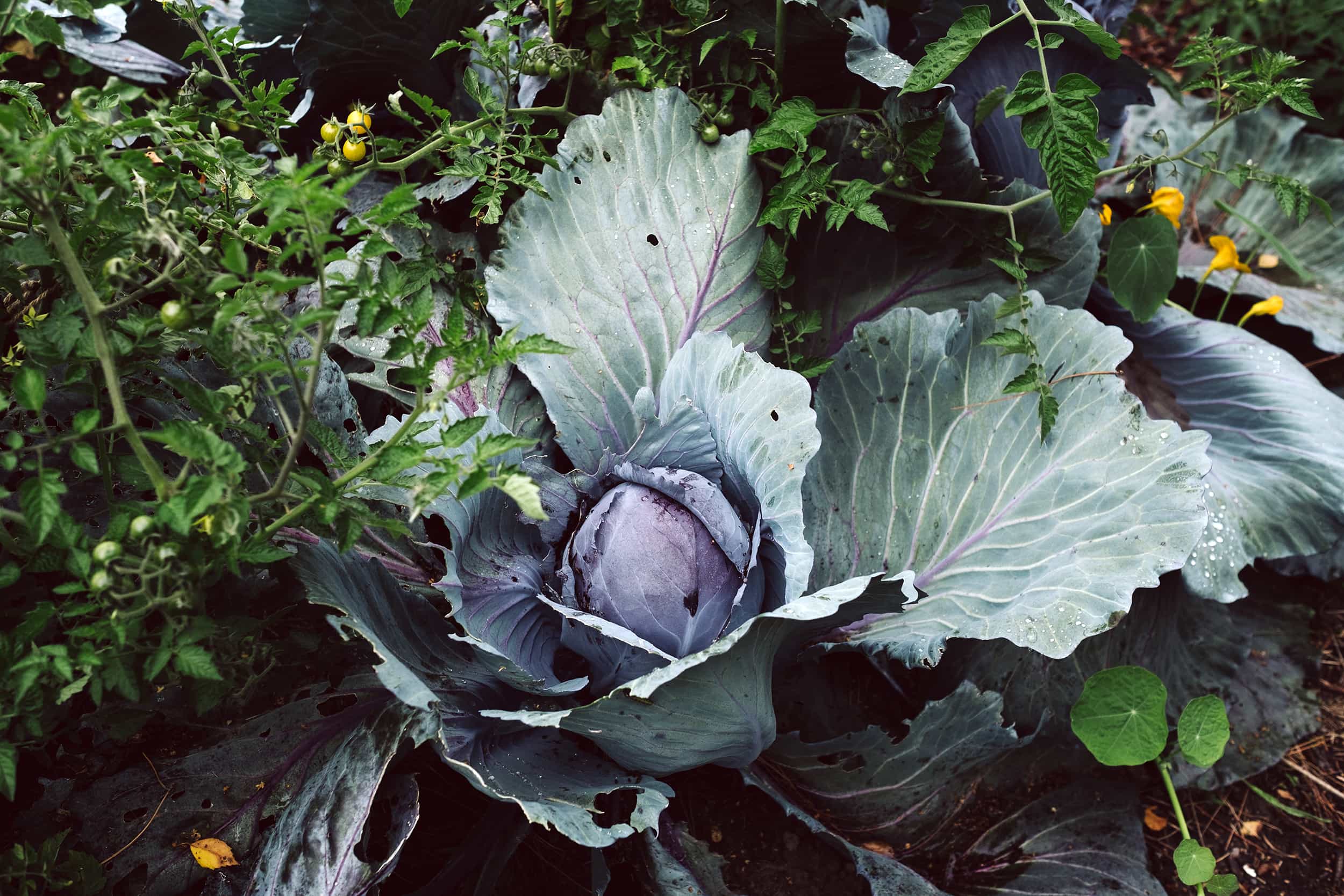
Pumpkin, corn and beans
One of the probably oldest mixed cultures is the so-called “Milpa”. For centuries the Maya and their descendants have combined the “three sisters” pumpkin, corn and runner beans. The mutual benefit takes place here on very different levels. The corn plants serve as a climbing aid for the beans, which in turn supply corn and pumpkin with nitrogen via their roots. The pumpkin covers the soil with its spreading leaves and protects it from dehydration and unwanted weeds.
Cabbage, celery/celeriac and tomatoes
Last season, one of our patches consisted of cauliflower, celeriac and tomatoes. The nutrients that the celery cannot utilize are growth-promoting for the cauliflower and thus more easily accessible. Celery’s scent also keeps cabbage pests at bay. The tomatoes also keep cabbage whiteheads away and protect the celery from rust diseases.
We also plant red and white cabbage together with tomatoes to reduce the infestation of cabbage whiteheads.
Leek and carrots
The gases emitted by the growing carrot root have a growth-promoting effect on leeks. This in turn, like other onion plants, keeps the carrot fly away.
Kohlrabi and spinach
A nice mixed culture in spring is kohlrabi and spinach. The spinach secretes saponin, which promotes the growth of kohlrabi. Many other vegetables can also benefit from this. The saponins improve the absorption of nutrients by neighbouring plants. The spinach also shades the soil and thus keeps water in the soil and annoying weeds away.
Onion plants and strawberries
Between our strawberries we put onions and garlic, as both are effective against spider mites and soil fungi due to their bactericidal and fungicidal agents. Other onion plants such as chives or leeks can also protect against strawberry grey mould.
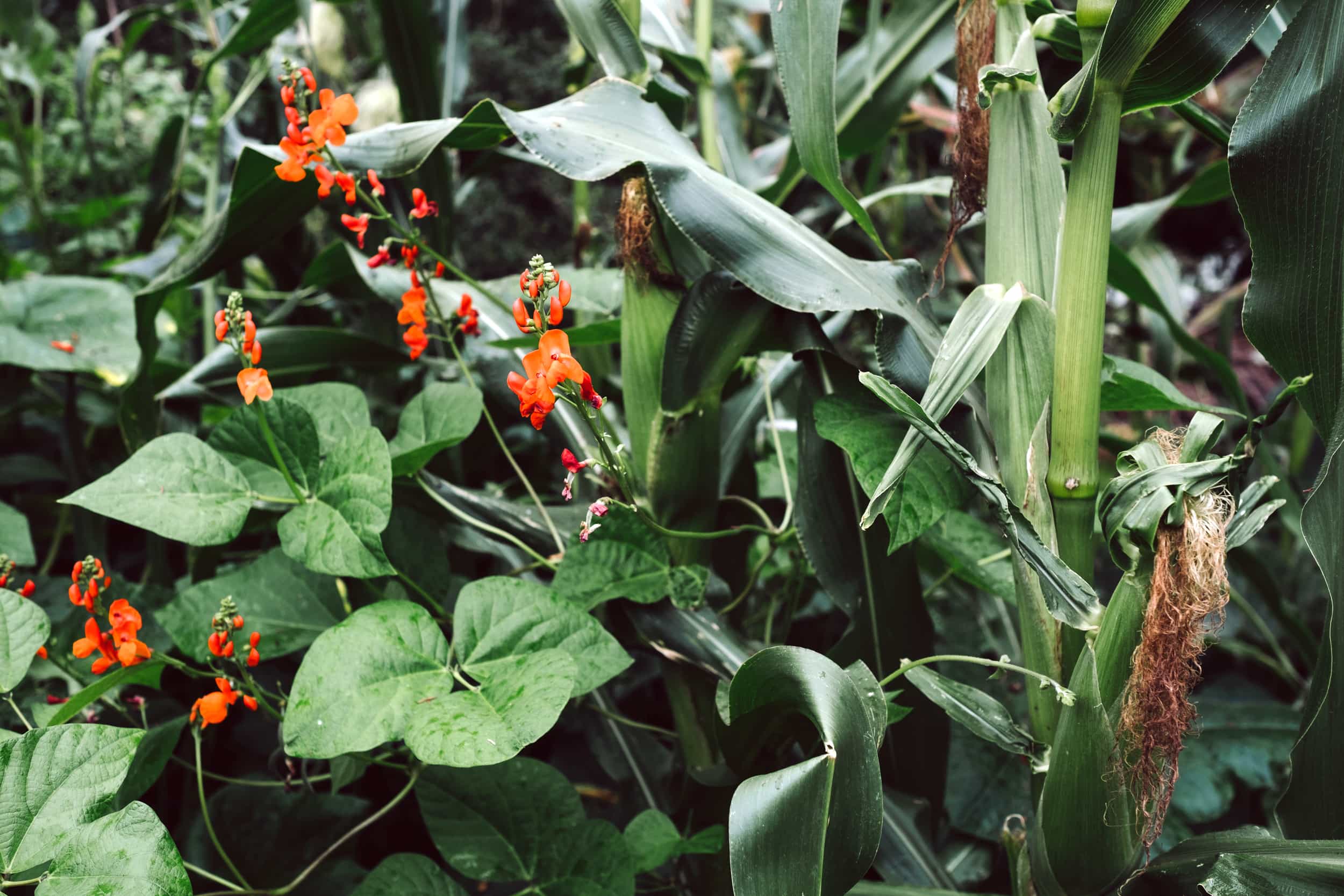
Herbs and flowers in mixed crops
A large part of kitchen herbs can be enriching for vegetable plants. Thyme, hyssop, rosemary and sage are said to drive away cabbage white butterflies, cabbage or carrot flies by emitting scents. In general, herbs, spices and medicinal plants are among our favourite mixed cultures.
Savory
Beans and savory are not only a good combination in the cooking pot. The herb expels the bean fly and the black bean aphid. The fragrances of the savory also promote the growth and aroma of the legumes. Beetroot and salad also benefit from the seasoning herb.

French Marigold and calendula
Tagetes and calendula protect against certain species of nematodes. The nematodes occur in several thousand different species and can be useful, but most of them are harmful. By penetrating the root system, nematodes can severely impair the metabolic cycle of plants. Peas, beans, carrots, cabbage, beets, onions, leeks or potatoes especially like these usually microscopically small worms as host plants. It is therefore a good idea to cultivate them together with tagetes or calendula. Tagetes are also said to keep away certain viruses, whiteflies and lice. Between the rows, calendula have a beneficial effect on e.g. tomatoes. They excrete plant-promoting substances especially through their root system.
Chamomile
On the edges of beans and peas, between lettuce and spinach, chamomile promotes resistance to fungal diseases. It is also said to have a positive influence on the growth of tomatoes and their flavour.
Borage
Borage does not only look pretty in the patch, it also attracts countless insects with its many flowers. Thus it acts as an excellent pollination aid. Cucumber, zucchini and pumpkin benefit from it in particular. The spice and medicinal plant is also said to have a pest-repellent effect on kohlrabi and other cabbages. The hairy leaves also keep snails away. However, the plant should preferably be placed at the edges of the bed, as it grows enormously and can quickly compete with cultivated plants for light, water and nutrients.

Nasturtium
It fends off harmful insects, especially lice, with its pungent odor. Here, however, you should opt for a small, ground-covering variety, as otherwise it will spread quickly in the bed and, like the marigold, will leave a lot of seeds at the end of the season. These should be harvested before maturity if the plants are not to spread wild.
Sunflowers
Sunflowers can serve as soil conditioners. This year we want to integrate a low-growing species in the kitchen garden.
Basil
Basil also grows in various places in our garden because of its beneficial effects. We use it against mildew and whitefly, for example on cucumbers or cabbage.
Dill
Dill promotes the germination capacity of seeds and its fragrances keep pests such as aphids at bay. Carrots, cucumbers, cabbages, beetroot, onions and broad beans benefit from it. We sow dill, in many of our beds, between the vegetable plants.
Of course, it must be added that planting in mixed crops does not guarantee that you will not have any pests in the vegetable patch and only drag out full baskets of harvested produce from the garden. But growing vegetables in mixed cultivation can make a good contribution to a healthy garden. We also think it looks beautiful how the different types of vegetables grow together in the bed, colourful and on different levels.


